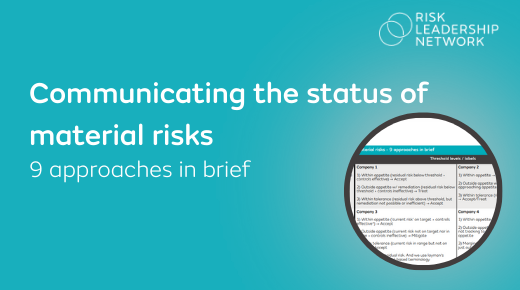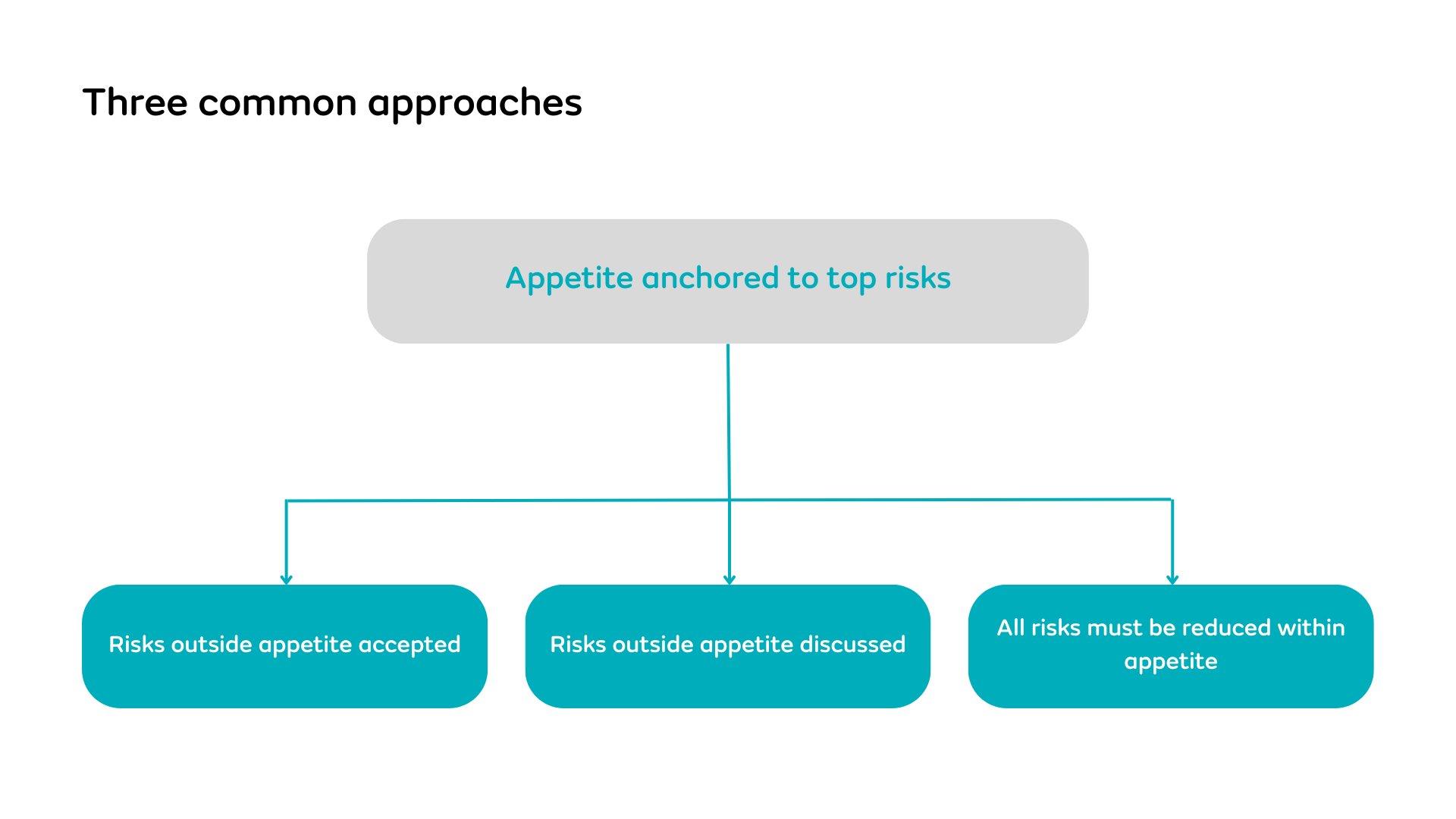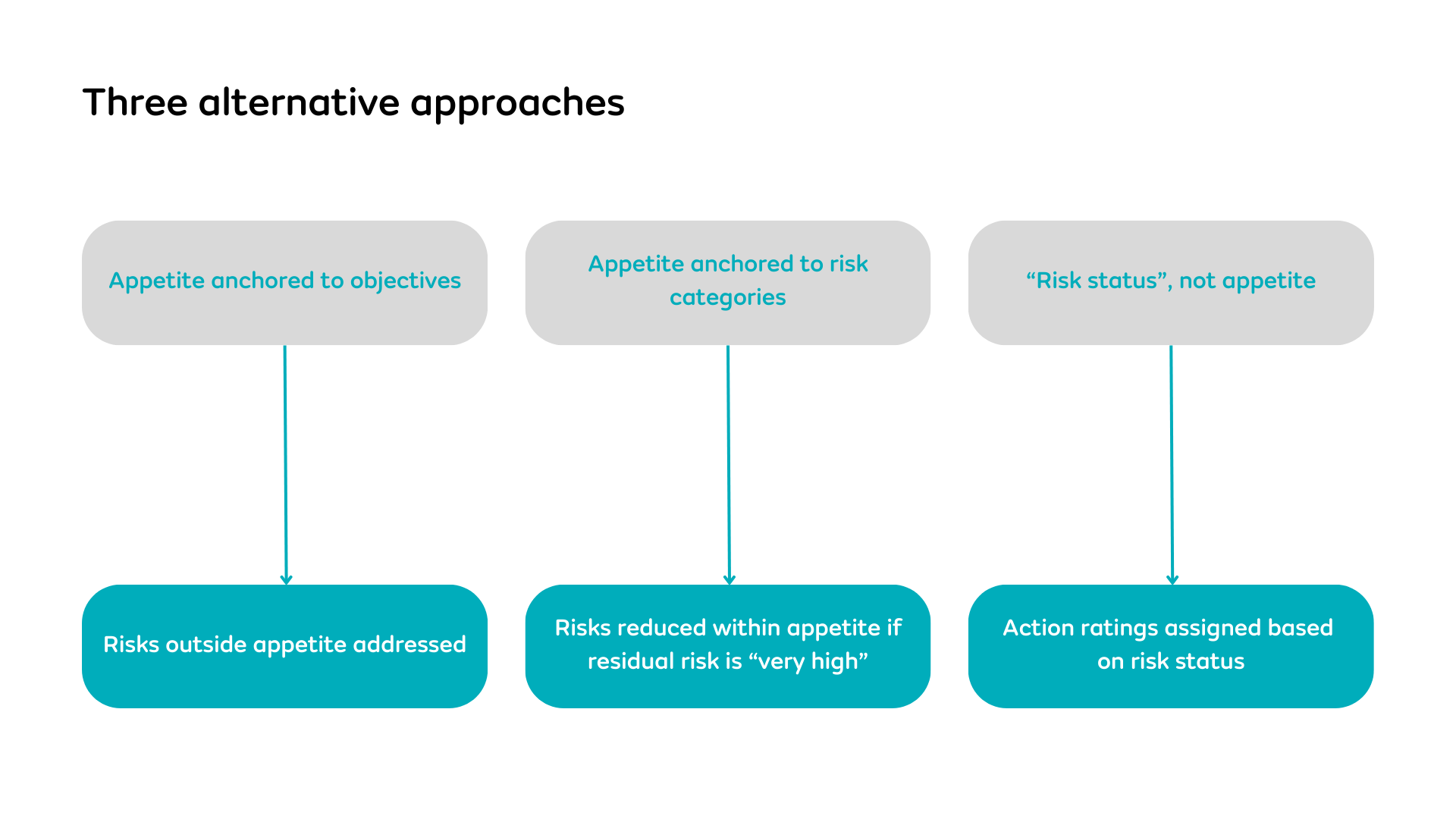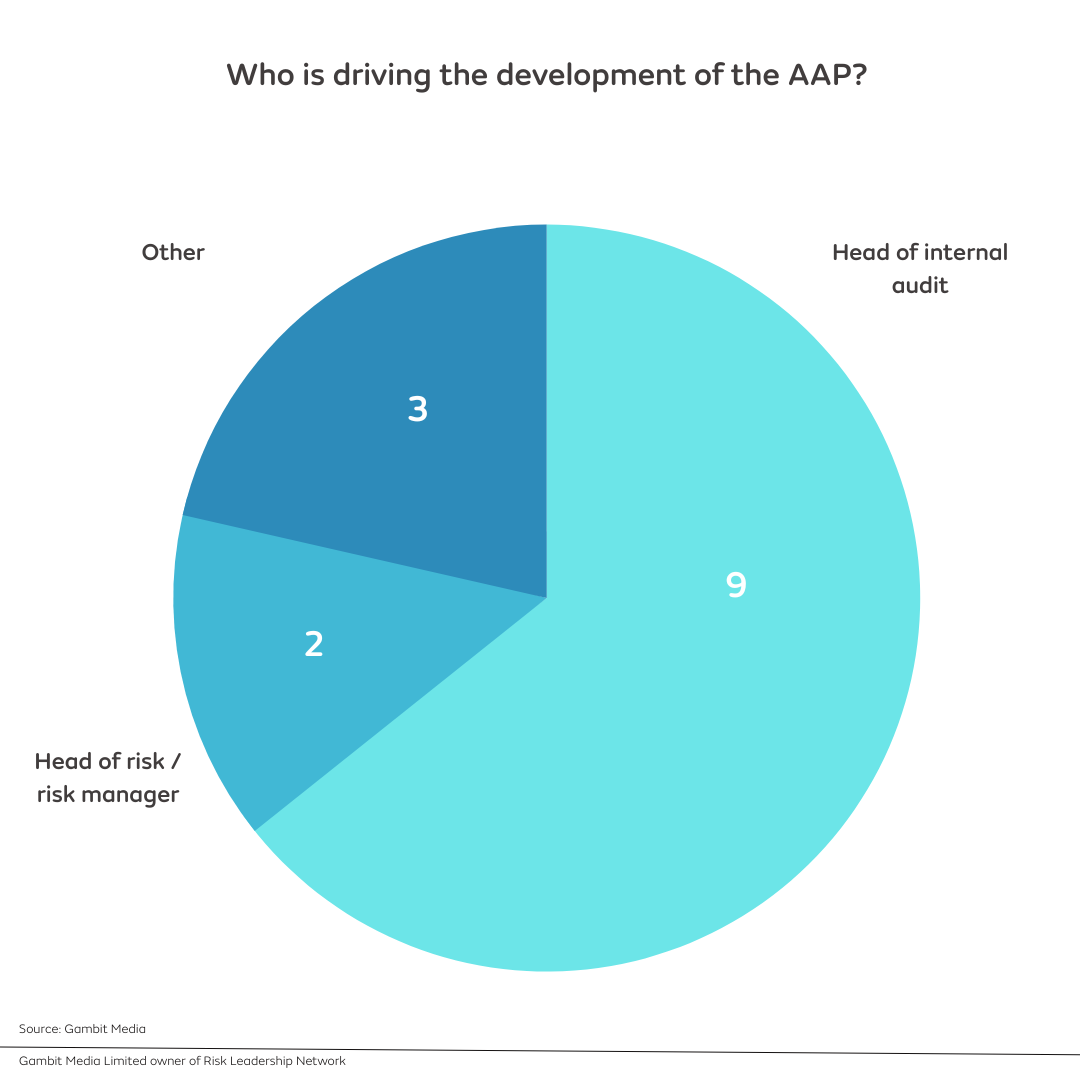Communicating the status of material risks: three common approaches and three alternatives
How do you talk with your board and executive committee about material risk? For many risk leaders, finding effective ways to communicate with their senior leaders about the status of risks represents a major challenge.

Below is a high-level summary of six approaches in the benchmark:
Three common approaches
Although the nine companies in the benchmark detailed different approaches to communicating material risk, a clear majority monitor material risk exposure against appetite:

1. Appetite anchored to top risks; risks outside appetite accepted
Risks that sit outside of appetite are accepted where remediation isn't possible
If risks outside appetite are possible to remediate, they will be treated
Risks outside appetite do need to be within tolerance limits if they are to be accepted.
2. Appetite anchored to top risks; risks outside appetite discussed
If risks are within appetite, no action needs to be taken
When risks are outside of appetite, these need to be reduced through mitigation (or taking more risk)
For those risks that are marginally out of appetite (but still within tollerance), a qualitative discussion is had to decide what action to take
Factors that influence this decision include looking at what the risk is tracking; for example, is it going to move outside of tolerance if nothing is done?
Where do these insights come from?To help a Risk Leadership Network member who wanted to find more effective ways to communicate with their senior leaders about the status of material, we produced a bespoke benchmark report. To prepare this benchmark, Communicating the status of material risks: 9 approaches in brief, we conducted a short survey of nine large, listed companies. As part of the survey, they shared the terms and thresholds they use to discuss material risk. We then followed this up by facilitating a series of 1-to-1 bespoke meetings so that the member could dig deep with risk leaders who had implemented an effective approach. Risk Leadership Network produces bespoke research and reports across a range of risk topics that address specific member needs and priorities. Take a look at more of our tailored solutions to address member priorities in our case studies. |
3. Appetite anchored to top risks; all risks must be reduced within range
Any risks outside appetite must be reduced within range
The board may need to revisit (and even update) the company's risk appetite statement
If the board decides to accept a higher level of risk for a specific risk that is outside appetite.
One company that takes this broad approach has a specific escalation plan they use in the event of breaches:
“If a risk falls outside of appetite, it is immediately escalated to the audit and risk committee (ARC), who discuss how to reduce that risk within appetite. However, if a risk is within appetite, but looks like it could move outside in the near future, it can be escalated to the executive leadership team.”
.png?width=1080&height=1080&name=Untitled%20design%20(1).png)
CRO
FTSE-listed organisation
Three alternative approaches
You may want to consider three alternative approaches, used by risk leaders at large listed organisations, in our benchmark:

1. Appetite anchored to objectives
Tie appetite to business and strategic objectives
When a risk is outside of appetite, it needs to be treated and prevented from happening again (or, if it is an upside risk, pursued if appropriate)
If a risk is within tolerance, then efforts are made to address these issues with performance and, in doing so, minimise exposure
A risk is within tolerance if performanec is inside KPI and KRI ranges, but not meeting targets.

2. Appetite anchored to risk categories
Appetite is set for categories of risk
Any appetite statement is formed as a professional judgement and not totally objective
A risk only moves outside of appetite when the level of risk exposure is not in the KRI target range
And the residual risk is "very high" (and showing an increasing trend) or "extreme".
3. Risk status for material risks rather than appetite
Risk status and action rating over appetite
Instead of communicating about risk through an appetite lens, risk status, as well as action rating is used (although appetite is assigned to risks).
If a risk is well controlled, a 'no action' or 'low action' rating is assigned.
"Well controlled" means that controls are effective at minimising likelihood and reducing impact.
If a risk requires some improvement, a 'low' or 'medium action' rating is assigned.
"Requires some improvement" means that the risk is not well controlled but likelihood or impact are not meaningfully increased as a result.
If a risk requires significant improvement, a 'high action' rating is assigned
A 'low action' rating for this particular organisation means the risk should be resolved within 12 months, a 'medium action' rating is six months, and a 'high action' rating is just three.
While members found value in validating their approach against other risk leaders through this benchmark, there was a lot of discussion in the subsequent 1-to-1 meetings about the implementation of alternative approaches. This enabled the CROs and heads of risk involved in this collaboration to introduce new approaches equipped with lessons learned by other risk leaders.
This is just one of the many collaborations that we've facilitated this month to help our members address their biggest priorities and challenges. Take a look at the other member priorities we're working on now, and find out more about how to get involved with membership here.
Share this
Related posts you may be interested in

How can risk appetite add value throughout the whole organisation?

How to create standout risk reports that demonstrate the real value of Risk
